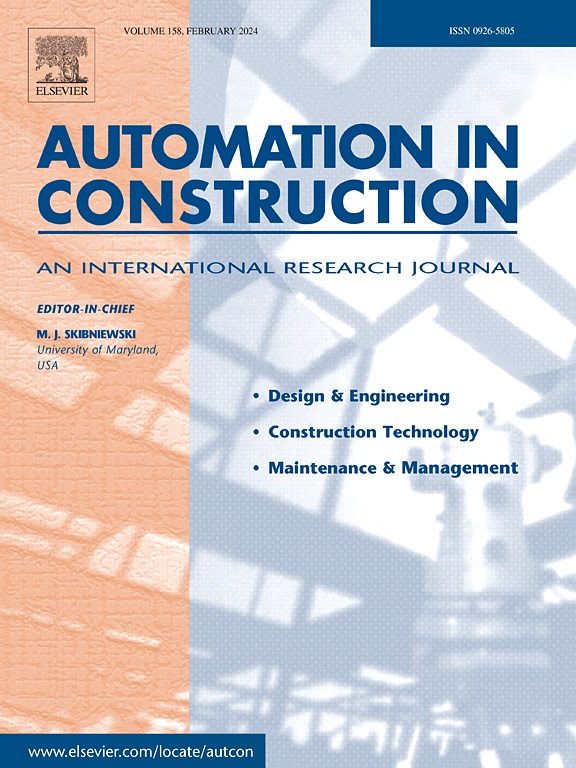Two-stage S-curve trajectory generation for time-optimal, anti-sway crane-rotation with jib-luffing and rope hoisting
IF 11.5
1区 工程技术
Q1 CONSTRUCTION & BUILDING TECHNOLOGY
引用次数: 0
Abstract
This paper presents a trajectory generation method for rotary cranes that minimizes motion time while effectively suppressing load sway. A two-stage S-curve trajectory, derived from motion patterns observed in skilled operators was designed to suppress two-dimensional load sway attributed to inertial and centrifugal forces. The proposed method optimizes rotational angular velocity by incorporating nonlinear crane dynamics and actuator constraints, ensuring time-optimal control employing only jib rotation. The method is further generalized to accommodate multiaxial motions, including jib luffing and rope hoisting, thereby improving the adaptability. The trajectory was validated via simulations and laboratory-scale experiments, yielding residual load-sway angles below 0.006 rad with minimum motion time. The results demonstrate improved precision in load transport and reduced dependence on skilled operators. This study advances crane automation and operational safety in autonomous lifting systems. Future work will focus on full-scale implementation, real-world validation, and mitigation of mechanical stress induced by dynamic load swaying.
两阶段s曲线轨迹生成的时间最优,抗摇摆起重机旋转与吊臂变幅和绳索提升
提出了一种旋转起重机轨迹生成方法,该方法在有效抑制载荷摇摆的同时,能最大限度地缩短运动时间。从熟练操作人员观察到的运动模式中导出的两阶段s曲线轨迹被设计用于抑制由惯性和离心力引起的二维负载摇摆。该方法结合非线性起重机动力学和作动器约束对旋转角速度进行优化,确保仅采用臂臂旋转的时间最优控制。将该方法进一步推广到多轴运动,包括臂变幅和绳索提升,从而提高了适应性。通过仿真和实验室规模的实验验证了该轨迹,以最小的运动时间获得了小于0.006 rad的剩余负载-摇摆角。结果表明,在负载运输精度提高,并减少了对熟练操作人员的依赖。研究了自主起重系统中起重机的自动化和操作安全性。未来的工作将集中在全面实施,现实世界的验证,以及缓解由动态负载摇摆引起的机械应力。
本文章由计算机程序翻译,如有差异,请以英文原文为准。
求助全文
约1分钟内获得全文
求助全文
来源期刊

Automation in Construction
工程技术-工程:土木
CiteScore
19.20
自引率
16.50%
发文量
563
审稿时长
8.5 months
期刊介绍:
Automation in Construction is an international journal that focuses on publishing original research papers related to the use of Information Technologies in various aspects of the construction industry. The journal covers topics such as design, engineering, construction technologies, and the maintenance and management of constructed facilities.
The scope of Automation in Construction is extensive and covers all stages of the construction life cycle. This includes initial planning and design, construction of the facility, operation and maintenance, as well as the eventual dismantling and recycling of buildings and engineering structures.
 求助内容:
求助内容: 应助结果提醒方式:
应助结果提醒方式:


